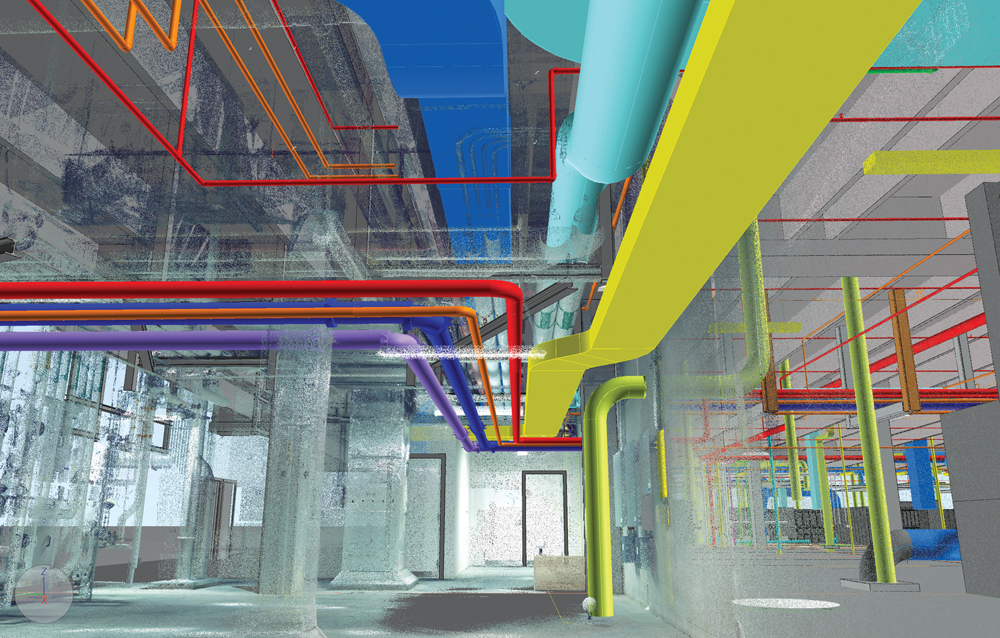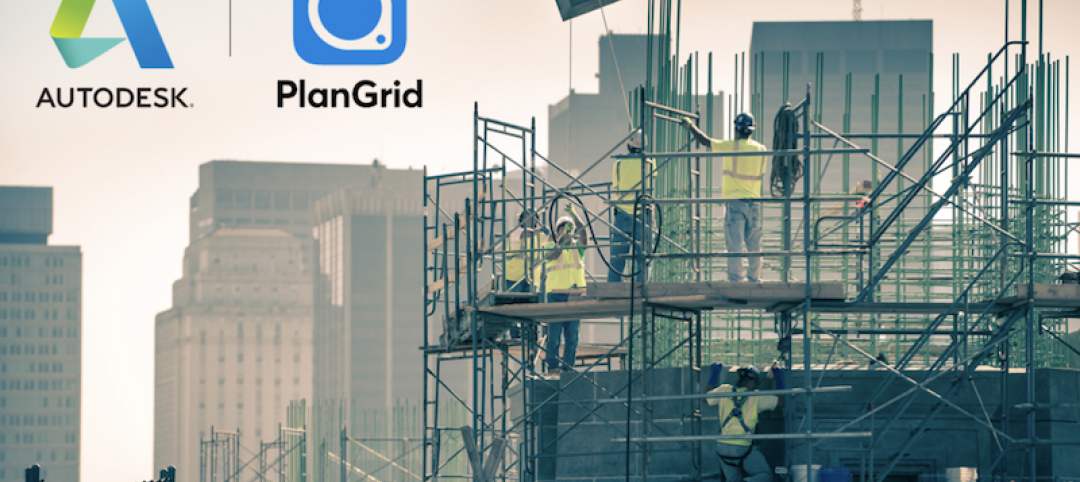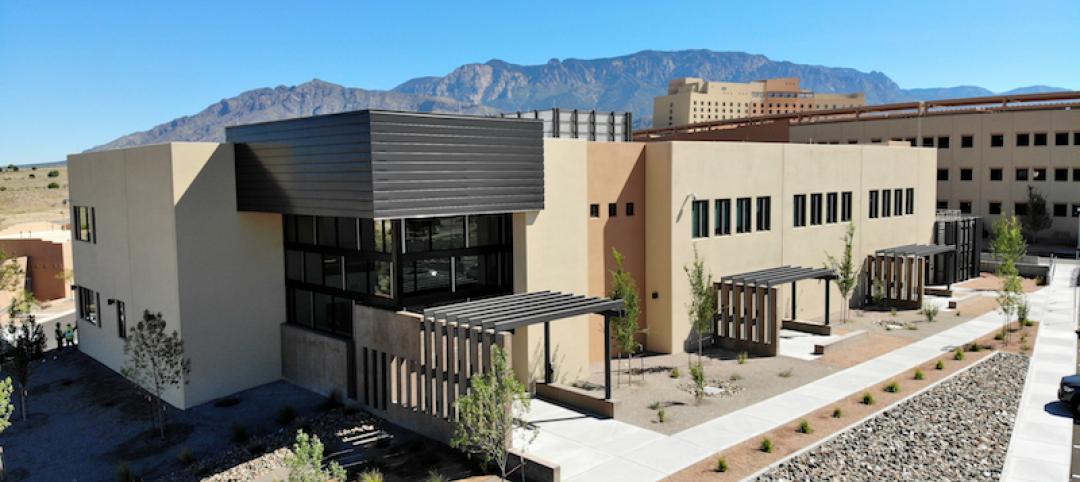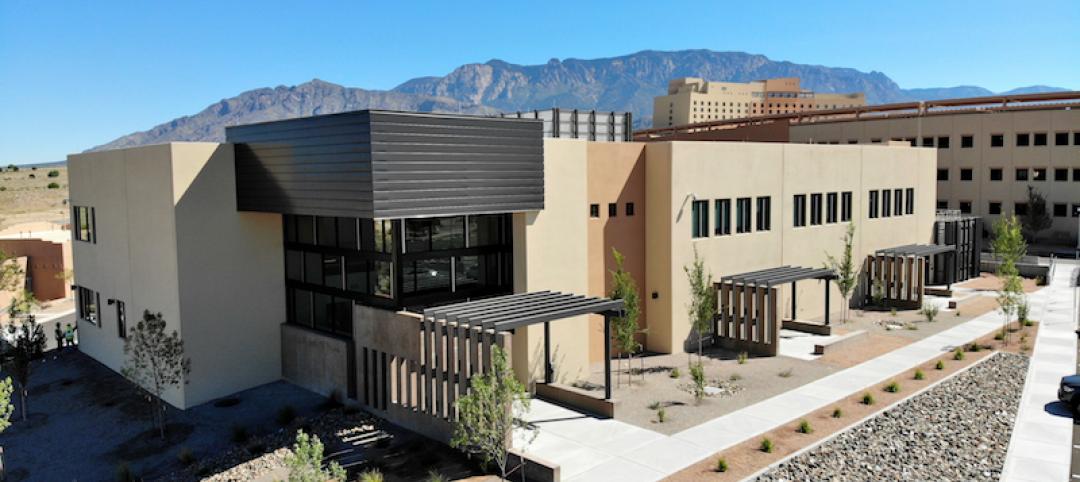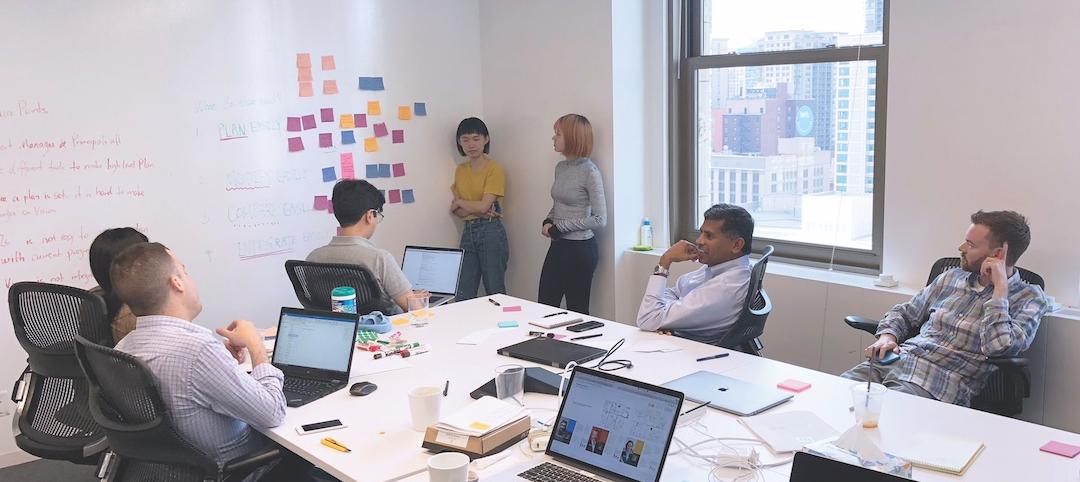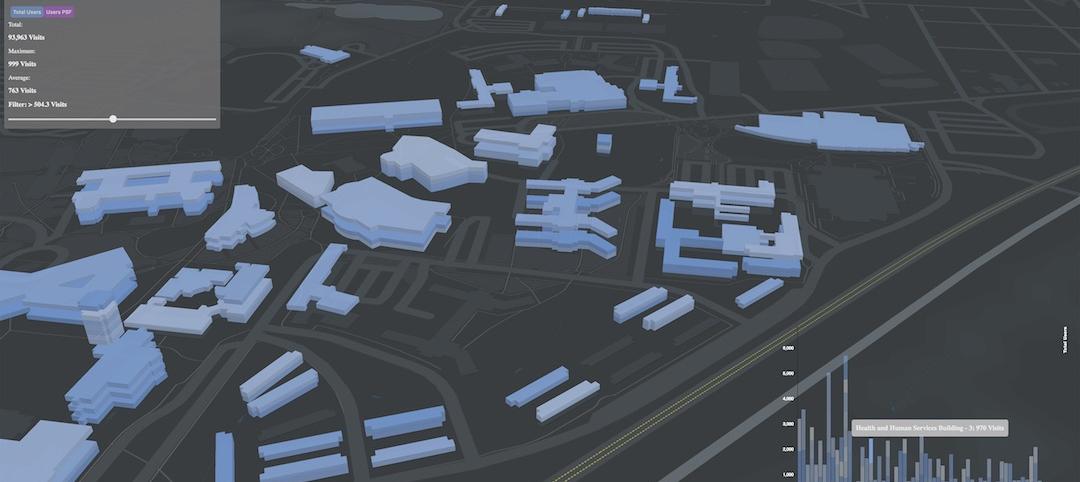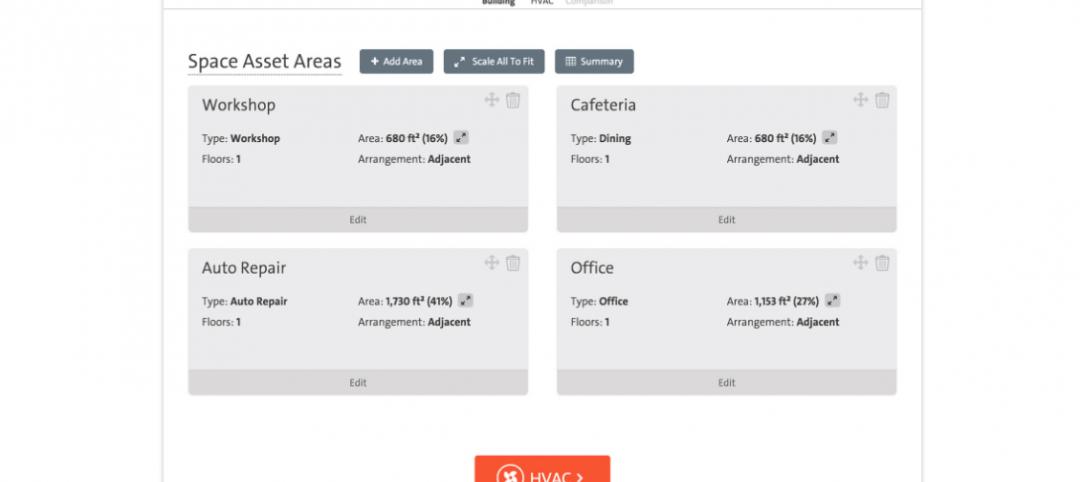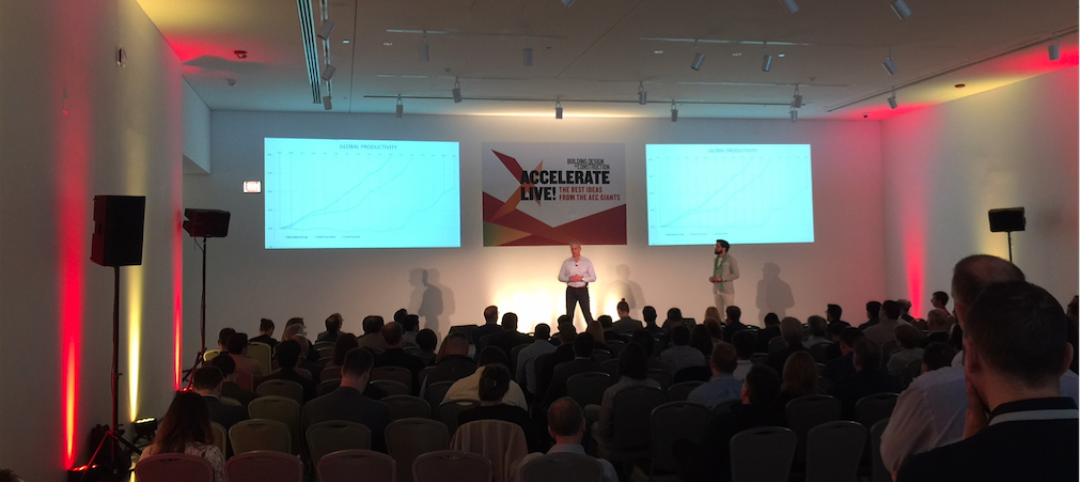This article is part of BD+C's special five-part Technology Report 2014: Top tech tools and trends for AEC professionals.
As building information modeling and virtual design and construction continue to evolve the work processes of AEC firms, promising technologies are being applied to take 3D coordination to the next level. Some are new breakthroughs; others have been vastly improved in recent years.
Regardless, experts agree that the following BIM/VDC-related technology trends will have a profound impact on the way Building Teams design, build, and even operate buildings in the near future.
1. 3D laser scanning is becoming affordable
The promise of enhancing BIM models with field-accurate information is rapidly becoming reality on construction sites, thanks to improved software importing capabilities and newer, less expensive field-scanning technologies.
A “scan” is a powerful laser recording of a structure that captures a site’s shape and appearance, and converts those conditions into a cloud of data points that can be imported into a BIM model. The equipment can be costly (the initial investment for a single scanner can reach $100,000), but many AEC firms are able to justify the upfront cost with the gains in efficiency on projects and additional consulting fees.
“We’ve found that laser scanning has a huge barrier to entry in cost, but if you own it, you find uses for it you otherwise wouldn’t have considered,” says John Tocci, Jr., Director of Virtual Design and Construction with Gilbane, and a past BD+C “40 Under 40” honoree.
Last August, the firm purchased its first laser scanner—a FARO Focus 3D—for roughly $60,000, including the software and training. It was a far cry from the six-figure price tag of older-generation laser scanners, but still a major investment for Gilbane. Tocci says the payback was almost immediate.
“On a single project alone, 30 minutes of scan time in the field and 30 minutes of post-processing and uploading the point cloud into a Revit model saved $30,000,” he says.
Gilbane has seen both cost savings and field safety improvements from importing laser scans into Revit models. Prefabrication and coordination of MEP systems installation has saved rework costs on every project on which the scanner has been employed. In particular, the prefabrication of ductwork has greatly minimized, and even eliminated, field work, especially related to rough-in activities.
“If someone is telling us from finished floor to underside of beam we have 11 feet, 8 inches, we can tell them with complete confidence if that number is accurate or not,” says Tocci.
Gilbane’s initial uses for the laser scanner—five projects across the U.S., spanning higher education renovations to work for the National Institutes of Health in Washington, D.C.—have generated such value that the firm is planning to purchase a second laser scanner this year.
2. Designers can now model energy performance on the fly
Energy modeling has been around for decades, but it remains largely a time-consuming and costly exercise. Single-purpose models, such as daylighting and airflow models, can take days or even weeks to build and run. Often, specialists are required to perform this work, adding yet another layer to the workflow process, budget, and schedule. All of this precludes design teams from applying an iterative design process during the conceptual design phase.
With new software tools, analysis performed during conceptual design is no longer a fantasy. Autodesk and Sefaira have developed applications that allow designers to perform energy analysis of early concepts on the fly. By condensing the time it takes to gather and crunch energy performance data from days to hours, it is feasible for design teams to tweak their designs on the fly based on the data.
“We often heard architects lamenting that by the time they got simulation data it was too late to change decisions made in conceptual design,” says Mads Jensen, CEO of Sefaira. “How can they put in shading devices and spec them while also understanding the implications of the different options available? How can they spec to balance the trade-offs between solar heat gain and the risks of overheating in the summer?”
Architects and engineers have to be careful to not use wrong approaches early on, Jensen adds. “We must learn how all the parts of a building project interact based on rigorous, fundamental, science-based analysis that comes from physics and shows how these different aspects of a building work.”
Sefaira is an analysis tool that integrates real-time data, including weather-station information, into the conceptual design process. SketchUp and Revit plug-ins allow its early analysis information, such as solar heat gain and airflow, to be used downstream by BIM authoring tools. Sefaira’s dashboard provides users with numbers and graphic performance representations of virtually any measurable energy usage prediction, including energy use intensity and daylighting potential.
Another tool that is revolutionizing conceptual design with real-time building performance data is Autodesk FormIt, a free Web- and mobile-based design application introduced last year. FormIt’s latest version comes with energy simulation features that enable users to gather instant energy-performance feedback on early design decisions, such as building orientation, thermal performance, and massing.
Eventually, users will be able to save conceptual FormIt data to Revit and Navisworks for downstream parametric modeling, according to Autodesk. In addition, the company is developing a real-time collaboration environment that will allow designers to simultaneously work on FormIt models and import the results into Revit.
3. Prefabrication will transform building delivery
A growing number of Building Teams are using BIM processes to collaborate with general contractors and construction managers to prefabricate and install building components, such as mechanical equipment, plumbing infrastructure, and even complete restroom pods.
DPR Construction began experimenting with the concept of using BIM to perform drywall detailing a few years ago. DPR’s self-performing drywall team would make decisions on how best to build in the field and then represent those decisions on a spool sheet created directly from the construction BIM model. These efforts started on the Sutter Health Castro Valley (Calif.) Clinic project.
“People say modular and prefabrication means it has to constrain the design,” says Nathan Wood, an Innovation Engineer at DPR. “The message we’re trying to send is that BIM allows prefabrication to be flexible, because no matter how unique and one-off the design is, as long as we know it is constructible in the model we can prefabricate it and install it.”
On the Castro Valley project, using fully coordinated BIM spool sheets allowed DPR’s drywall team to install all of the hospital’s post and panel construction before the walls went up. This meant they could also install the MEP equipment before the walls were built, eliminating the need to snake infrastructure through a maze of walls and avoiding costly rework if something did not fit as drawn.
When it came time to fabricate the hundreds of steel-framed drywall panels, DPR had the light-gauge panel frames built in the quiet of a nearby factory rather than on the often chaotic job site.
4. Data management will play a more vital role in projects
Cloud-based collaboration continues to take over functions that once ate up hard drive space on a designer or BIM/VDC manager’s computer. As more data moves to the cloud, and more Building Team members begin to interact with centralized 3D models, the need to manage, store, and share project data becomes absolutely critical. Software companies like Assemble Systems and Panzura have developed cloud-based tools for advanced data management.
With Assemble Systems, a team’s model data is published to Assemble’s secure website, which includes tools for takeoffs and schedules, a model viewer, model variance, and automated estimating. Any Revit, AutoCAD, or Navisworks file can be uploaded to Assemble’s database and shared via the Web with other Building Team members.
Panzura uses a proprietary hardware controller located in the user’s office to offer secure access to project data. The Panzura Global Cloud Storage System includes a Web-based operating system, file-sharing system, and the hardware controller. The setup provides enterprise-class data storage services, including consolidation, archiving, heightened access, and security.
5. Computer-aided manufacturing is on the horizon
As prefabrication and manufacturing processes such as Lean construction begin to unlock savings and process efficiencies, the AEC industry will be forced to adapt in much the same way computer-aided manufacturing changed manufacturing.
CNC fabrication is no longer cutting-edge technology for building components. For example, steel fabricator Banker Steel expanded one of its Lynchburg, Va., facilities by 45,000 sf to create a workshop dedicated to the fabrication of building modules for the $4.9 billion, 32-story B2 Atlantic Yards project in Brooklyn. With 60% of construction completed off-site in a factory, this project is relying on several CAM technologies, coupled with BIM processes, to deliver ready-to-install modules. When completed, B2 will be the tallest building in the world built using modular technology.
While traditional processes won’t be eclipsed any time soon, just knowing what can be done with today’s BIM technologies will further push adoption.
Related Stories
Building Technology | Dec 20, 2018
Autodesk is spending $1.15 billion to acquire two construction tech providers
PlanGrid and BuildingConnected are the latest pieces in the company’s quest to digitize the construction industry.
Building Technology | Dec 18, 2018
Data and analytics are becoming essential for EC firms competing to rebuild America’s infrastructure
A new paper from Deloitte Consulting advises companies to revise their strategies with an eye toward leveraging advanced technologies.
Sponsored | BIM and Information Technology | Oct 15, 2018
3D scanning data provides solutions for challenging tilt-up panel casino project
At the top of the list of challenges for the Sandia project was that the building’s walls were being constructed entirely of tilt-up panels, complicating the ability to locate rebar in event future sleeves or penetrations would need to be created.
Sponsored | BIM and Information Technology | Oct 15, 2018
3D scanning data provides solutions for challenging tilt-up panel casino project
At the top of the list of challenges for the Sandia project was that the building’s walls were being constructed entirely of tilt-up panels, complicating the ability to locate rebar in event future sleeves or penetrations would need to be created.
BIM and Information Technology | Aug 16, 2018
Say 'Hello' to erudite machines
Machine learning represents a new frontier in the AEC industry that will help designers create buildings that are more efficient than ever before.
BIM and Information Technology | Aug 16, 2018
McKinsey: When it comes to AI adoption, construction should look to other industries for lessons
According to a McKinsey & Company report, only the travel and tourism and professional services sectors have a lower percentage of firms adopting one or more AI technologies at scale or in a core part of their business.
BIM and Information Technology | Jul 30, 2018
Artificial intelligence is not just hysteria
AI practitioners are primarily seeing very pointed benefits within problems that directly impact the bottom line.
AEC Tech | Jul 24, 2018
Weidt Group’s Net Energy Optimizer now available as software as a service
The proprietary energy analysis tool is open for use by the public.
Accelerate Live! | Jul 17, 2018
Call for speakers: Accelerate AEC! innovation conference, May 2019
This high-energy forum will deliver 20 game-changing business and technology innovations from the Giants of the AEC market.
BIM and Information Technology | Jul 9, 2018
Healthcare and the reality of artificial intelligence
Regardless of improved accuracy gains, caregivers may struggle with the idea of a computer logic qualifying decisions that have for decades relied heavily on instinct and medical intuition.


